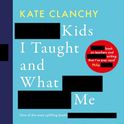Enniscorthy in County Wexford, where four of Colm Tóibín’s novels are set. © REX/Design Pics Inc
Nora Webster by Colm Tóibín (Viking, £18.99)
Colm Tóibín has written eight novels. Four of them—The South, The Story of the Night, The Master and The Testament of Mary—deal with subjects ranging from Argentinian politics to the life of Henry James. The other four form an intriguingly uniform quartet. The Heather Blazing, The Blackwater Lightship, Brooklyn and now Nora Webster are all rooted in Enniscorthy, the small town in County Wexford where Tóibín himself grew up.
Because Tóibín’s characters move freely through the four books, we glimpse them from multiple angles at different times in their lives. The Heather Blazing tells the story of Eamon Redmond, a Dublin judge close to retirement in the 1990s, interleaved with memories of his 1940s childhood. Like the other “Wexford novels,” the narration focuses tightly on a single character: for 243 pages, we see things from Eamon’s point of view. At the end of Brooklyn, set in the 1950s, the protagonist Eilis goes with friends to the beach at Cush. (The characters in all four books holiday at Cush on the Wexford coast.) They see Eamon’s father and someone remarks that Eamon himself must be studying—“that’s what he usually does.” It’s a throwaway detail if Brooklyn is the only Tóibín novel you’ve read. But if you’ve met Eamon before, the moment resurrects him as a young man and provides an external view of someone you know intimately from “inside.”
In each new novel Tóibín embellishes his scale model of Enniscorthy. Compare JD Salinger’s Glass family, who appear in a number of his stories and novels, or Bret Easton Ellis’s recurring characters, several of whom attended the same fictionalised version of Bennington College, New England. But Tóibín’s works interlock more closely than either, in part because of Enniscorthy’s size. The final section of Brooklyn includes not only Eamon Redmond and his family but also Dora Devereux (the grandmother in The Blackwater Lightship) and Nora Webster, seen with her husband (who is dead by the time we get to Nora Webster). This cross-novel name-checking reflects the parochialism of Enniscorthy, where everyone knows everyone. One of the charms of these deeply nostalgic novels is that they offer a stronger sense of place and community than most of Tóibín’s readers will ever experience. The attendant risks are tweeness, claustrophobia and repetition.
In a 2013 interview in the Guardian, Tóibín was asked, “What’s more important in fiction: story or style?” His reply—“I’m against story”—will come as no surprise to readers of the Wexford novels. If John Updike’s mission was to “give the mundane its beautiful due,” then Tóibín’s is to give the mundane its mundane due. At its best, his writing boasts a hard-won simplicity, eschewing the artificial thrill of plot in favour of a patient, water-tight realism. Tóibín is unafraid to dwell on things like house sales and filing systems: the stuff that makes up so much of life and so little of fiction.
But you can’t make a novel out of filing systems. You can do away with plot, perhaps, but you still need some sort of a hook, be it a dazzling prose style or a compelling central event. What Tóibín uses in place of story is death. Death adds drama and heft, and acts as the coagulating agent in all of the Wexford novels. In The Heather Blazing, Eamon’s father is a widower. The central events of the novel are the death of his father and of his wife. In The Blackwater Lightship, Lily Devereux is a widow. Her two grown-up children are still emotionally damaged from the long period they spent with their grandmother while their father was ill in hospital; their mother never once came to visit them. In Nora Webster, Nora is also a widow. She worries that her two youngest children will suffer emotional damage from the long period they spent with their great aunt while their father was ill in hospital; Nora herself never once went to visit them. In Brooklyn, Eilis Lacey’s mother is a widow. The novel opens with the family still numb from her husband’s death. The central event is the sudden, shocking death of Eilis’s sister.
In addition to building up a many-layered picture of life in Enniscorthy, then, the novels can be seen as an extended exploration of grief and death. But they also share material on the micro-level, and these smaller repetitions do not always feel deliberate. One example of several is the image of a town boy disliking mud. In Nora Webster, Nora’s sons “respond suspiciously” to anything that involves “putting on boots and old clothes and going near farm animals.” In The Blackwater Lightship, we hear that “Declan had no boots; he hated the muck of the yard and the lane,” while the young Eamon in The Heather Blazing “hated putting on Wellington boots and wading through the thick muck of the haggard.” This is a highly efficient recycling system, not a single yoghurt pot wasted. In Henry James’s novel The Spoils of Poynton, Fleda Vetch marvels at how beautifully the now-impoverished Mrs Gereth has arranged a “few sticks” of furniture: “You make things ‘compose’ in spite of yourself. You’ve only to be a day or two in a place with four sticks for something to come of it!” Mrs Gereth’s thrift stands in for the writer—James in this case—constructing a sophisticated novel out of modest materials. Tóibín is attempting to construct four novels out of the same “few sticks.” All these books share, to greater or lesser extent, location, theme, subject matter, characters, prose style and narrative voice. The one thing left to vary is form. The Wexford novels are, in their quiet way, formally diverse; and it is on the effectiveness of the chosen form that the success of each novel rests.
A better image for Tóibín than James’s “few sticks” might be that of a potter throwing several pots in succession, the same basic material shaped in different ways. The Heather Blazing is a beautiful object, its form fitted perfectly to one of Tóibín’s favourite themes, the subjective nature of time: “[He] experienced a sudden illusion that nothing in him had changed since he first saw these buildings.” By alternating scenes from Eamon’s youth with his older-middle age, Tóibín makes this effect literal. We see Eamon holidaying in Cush as a young boy and as a much older man; and the unchanging landscape makes it easy for us to share with him the disconcerting impression that no time has passed at all. The structure also allows for poignant juxtaposition. There is a harrowing scene in which Eamon’s wife Carmel, recovering from a stroke, soils herself. Eamon bathes her and puts her to bed, where she manages to tell him something that has gone unsaid for years. “I feel I don’t know you at all… you let me see so little of you.” She wants to talk; Eamon, wedded to his work, deeply introverted, finds it impossible. In the very next chapter, the narrative of Eamon’s young life has caught up to the point where he meets Carmel and they kiss for the first time. Then we cut to the aftermath of Carmel’s death. These contrasts are simple and effective and heartbreaking.
Brooklyn, which won the 2009 Costa Novel Award, is another perfectly proportioned success. The narrative follows Eilis Lacey from Enniscorthy to Brooklyn, where she works in a department store. Eilis’s life is plausibly formless—almost dangerously so, because Tóibín maintains this directionless-ness for 170 pages. Then on page 171, the local priest (from Enniscorthy, also living in Brooklyn) comes into the department store to tell Eilis that her beloved older sister Rose has died. The tragedy is as unexpected on the page as it would be in life: everything is normal—boring, even—and then, suddenly, awfully, it isn’t. It is a high-risk strategy that pays dividends; the reader, like Eilis, remains in shock to the end of the book.
The other two novels, however, are not interesting enough on a formal level to compensate for the lack of “story.” In The Blackwater Lightship, Helen’s brother Declan is dying from Aids, and her mother, grandmother and two of Declan’s best friends have gathered in Cush to nurse him. As in Brooklyn, the narrative is strictly linear, but here there is no equivalent to the animating shock of Rose’s death. The monotony of Helen’s viewpoint is varied only by long, slightly stagey monologues from the other characters: one talks about his lover’s inability to get over the deaths of his parents, who were killed in a car accident; Helen’s mother relives her husband’s death from cancer. There is something unsubtle about this, a flavour of therapy—“the talking cure”—that nudges Tóibín’s naturally bleak aesthetic a little too close to misery fiction.
The new novel, Nora Webster, deviates slightly from the usual Wexford template in that all the dying is in the past: we open six months after her husband Maurice’s death. Tóibín charts Nora’s grief over the next three years, giving us a woman so numbed she struggles to look after her children. “When she asked herself what she was interested in, she had to conclude that she was interested in nothing at all.” Tóibín’s prose style is ideal for the blank, calm horror of bereavement—as it is for Eilis’s (implicitly traumatised) passivity and Eamon’s remote, near-autistic self-possession.
“If Colm Tóibín were a singer, you would say he had perfect pitch,” declares the dust jacket of The Heather Blazing. It’s hard to argue with that assessment. But is it enough, for a novelist? Nora Webster is constructed as one great many-layered chord, the notes of Nora’s life swelling together in a rich minor key. Lots of little things happen. Nora sells the family holiday house in Cush. She gets a job and dislikes her boss. She visits her sister for the first time since Maurice’s death. She discovers the pleasure of music and takes singing lessons, but fails a choir audition. Her son Donal is unhappy at the school where his father used to teach, so the family help move him to a new one. Nora’s daughter, Aine, goes missing and there is a worry that she’s joined the IRA, but she hasn’t. Nora redecorates the house. The physical strain of painting the ceiling prompts the novel’s climax: she has a kind of nervous breakdown and Maurice appears to her in what could either be a dream or a visitation. Briefly, the novel picks up pace. When Nora’s family take her in and look after her for a few days, they find that she has yet to clear out Maurice’s clothes. In the final scene her sisters take the clothes away and Nora burns Maurice’s letters.
At all times there is a convincing sense of real life on the page, with the intricacies and absurdities of small-town life captured by the skilful dialogue. And there is plenty of atmosphere: we feel the feel of Enniscorthy, the coast and especially the sea, which dwarfs human lives in Tóibín’s fiction as inevitably as time and death. But an entire novel is a long time to sustain a single chord. With a prose style as placid as Tóibín’s, something else is required. The Heather Blazing works because of the judiciously chopped-up narrative. In Nora Webster, there is less event than in any of the previous novels. What we have is 300 pages of Nora’s finely-nuanced numbness, followed by 10 pages of abrupt yet tentative recovery. Although the formlessness is part of the point, it doesn’t rescue the novel from, well, a deadly formlessness.
It is also hard not to feel that Nora Webster has been put together, albeit very tastefully, from the off-cuts of earlier novels. Nora’s son Conor loves going up and down the escalator when they visit Dublin, exactly like the young Helen in The Blackwater Lightship. Nora’s job, described in detail, is suspiciously similar to Eilis’s temporary work in Brooklyn. There is nothing new, nothing novel, about Nora Webster. Tóibín may have perfect pitch, but we’ve heard this song before.

Enniscorthy in County Wexford, where four of Colm Tóibín’s novels are set. © REX/Design Pics Inc
Colm Tóibín loses the plot
The novelist's fiction often makes a virtue of its mundane settings. But his latest novel is a reminder of what happens when you do away with plot entirely
November 13, 2014











